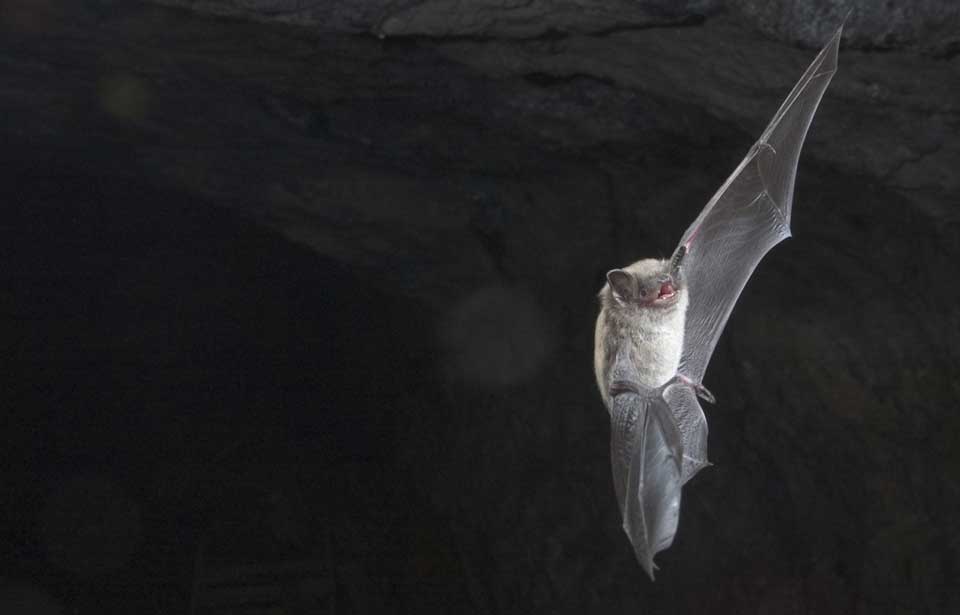Most of Canada’s bat species rely on caves and abandoned mines to hibernate. Humans exploring these habitats can be a life-threatening problem for bats. Each time a hibernating bat is wakened, it burns from 10 to 60 days worth of fat reserves. The creature may not have enough energy left to survive until spring.
An even greater threat occurs when abandoned mines are sealed up for the sake of human safety. In 1991, more than 1,000 hibernating northern long-eared bats were accidentally trapped in an abandoned, sealed mine near Sherbrooke, Quebec. Biologists raised a public outcry, forcing the government to allow a bat grill to be installed. This narrow opening enabled bats to zip in and out of the mine undisturbed, while excluding vandals and curious humans. Hundreds of custom-made bat grills are now in use in Canada and the United States, saving countless bat lives.
Here’s how you can help conserve these important bat habitats:
- Never explore caves or mines without permission from conservation authorities.
- Inform your community about the value of bats and the threats these mammals face. Urge friends, classmates, and neighbours to stay out of caves and abandoned mines. Many people have no idea how critical these habitats are to bats.
- Ask natural resources staff, bat biologists, and other knowledgable people if there are caves or abandoned mines in your area. Are they used by bats?
- If your research turns up a hibernation hot spot, find out if it’s likely to be explored by curious humans. If it’s a mine, is it slated to be sealed? If the habitat is threatened, sound the alarm. Organize a campaign to have the cave or mine furnished with a bat grill. For advice and detailed bat-grill plans, contact BCI at batinfo@batcon.org or write P.O. Box 162603, Austin, Texas 78716.



